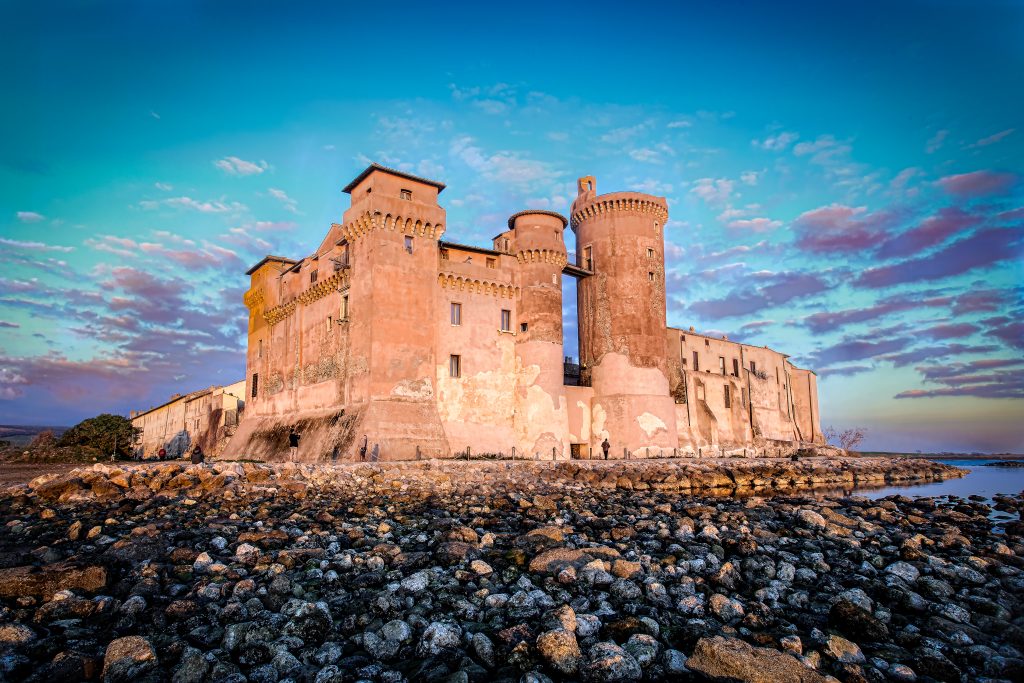
Santa Severa’s Castle is one of the most evocative places of the Lazio region, located along the Tyrrhenian coast in the north of Rome, is a heritage of inestimable value both historical and cultural. The Castle owes its current name to the young Christian martyr Severa, who was killed – traditionally – on June 5, 298 AD in this place, together with his brothers Calendino and Marco, under the empire of Diocletian.
The Early Christian Church was dedicated to her, dating back to the second half of the V century or the early decades of the VI century, found in the modern era and currently visible, in part, in the Piazza della Rocca. This area has its origins since ancient times and the first findings date back to the Bronze Age, when the populations settled thanks to the presence of numerous courses and freshwater springs.
In the VII century A. C. Pyrgi was built between the most important sea ports of the whole Etruria, only 13 Km away from the powerful Caere – then Cerveteri – of which it was the main port. The Etruscan settlement then became the seat, in first half of the III century, of a Roman colony (Castrum) whose remains are present in the fortification walls.
The side facing the sea, however, is only visible in the basement of the “woodshed” room. The area still undergoes a metamorphosis in the Imperial age and from a military camp became a residence of wealthy Roman families who owned luxurious seaside villas. A vast cemetery extends over the remains of buildings from the Roman Era and Late Antiquity, starting at least from the IX century and presumably used until the XIII-XIV century.
The structure of the real Castle, however, dates back to the XIV century. A moat surrounded the structure, with a rectangular plan with corner towers, and connected it by a wooden bridge to the imposing cylindrical fortification, the “Maschio”, formerly called “La Torre del Castello”. Pope Leo X built it in the mid-ninth century and, following further reconstruction, it continues to this day in its XVI-XVII century structure.
The first written documentation of the castle dates back to 1068, when Gerardo di Galeria – a Count of Norman origin – donated the Castle and the Church to the Abbey of Farfa that in 1130, under Pope Anacletus II, gave it to the confreres of St. Paul. In 1482 Pope Sixtus IV donated it to the Order of the Holy Spirit, who owned it for five hundred years, until 1980.
It was during this period, under the aegis of Santo Spirito, that the village came to life (between the XV and XVI centuries) and in the entire place, the typical coat of arms of the Order is visible: the patriarchal cross. After a long period of decline, the Germans also used the Castle as a strategic base during the Second World War.
This brief overview of a long historical route covers over 2000 years of history and leads us to a more recent age in which the Castle became the property of the Local Health Authority. Then the goods of hospital orders passed to the latter, and currently by Regione Lazio, which has wanted to reopen it since the summer (April-October) to visitors, to allow the community to enjoy this extraordinary heritage suspended between legend and reality. Since April 2017 the Castle kissed by the Sea begins a new story and a new historical, artistic and cultural journey.